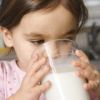Article
Are Dairy Products Good for the Heart?
Author(s):
As the bioactive fatty acids in milk have been tentatively linked to anti-inflammatory and improved metabolic effects, its calcium, magnesium, phosphorus, and potassium content may lower blood pressure and alleviate cardiometabolic syndrome.

The media presents a constant stream of new research results that moves foods and food groups from “good” to “bad” and back again with amazing speed. Regardless, most research has supported dairy — including milk, cheese, and yogurt — as a component of a high-quality diet, as those who consume dairy products have been shown to have a lower risk of cardiovascular disease (CVD).
Beth H. Rice, of the Dairy Research Institute in Illinois, recently conducted a meta-analysis of studies that examined the relationship between dairy consumption and CVD incidence and mortality, including 18 observational studies published since 2009 that found total dairy intake does not contribute to CVD incidence or death.
The studies indicated that milk, cheese, and yogurt consumption is inversely associated with CVD risk. They also revealed that full-fat milk, cheese, and yogurt might potentially protect against CVD; however, the relationship requires further study, as the findings were inconsistent.
Milk fat components contain more than 400 unique fatty acids, many of which are unique to dairy products. As the bioactive fatty acids in milk have been tentatively linked to anti-inflammatory and improved metabolic effects, its calcium, magnesium, phosphorus, and potassium content may lower blood pressure and alleviate cardiometabolic syndrome. Nevertheless, more research is need to clarify which components of milk fat are most active, as well as how they work.
Based on available evidence, Rice concluded that Americans aged 9 years and older would be wise to consume 3 daily servings of milk products, such as milk, cheese, and yogurt.




